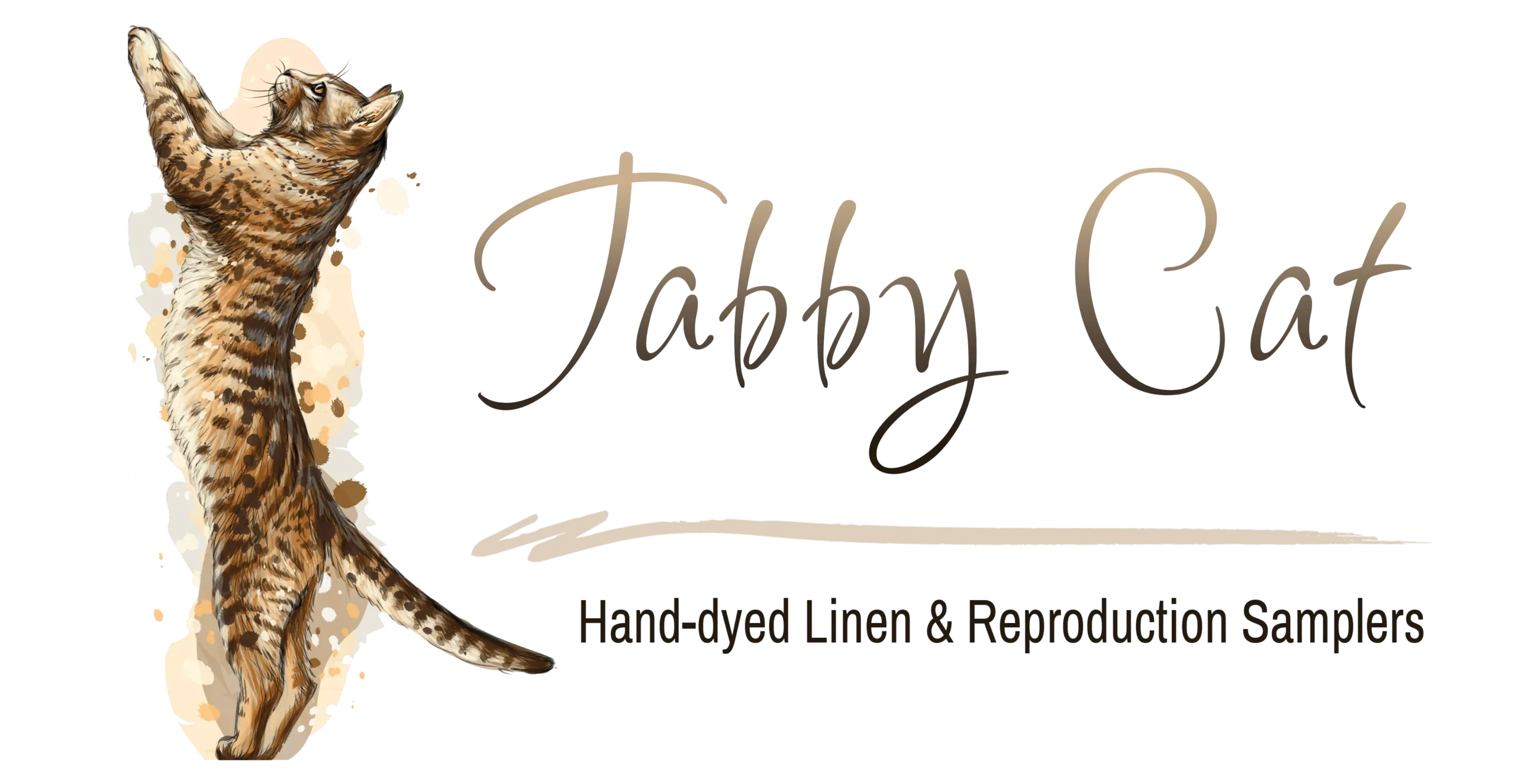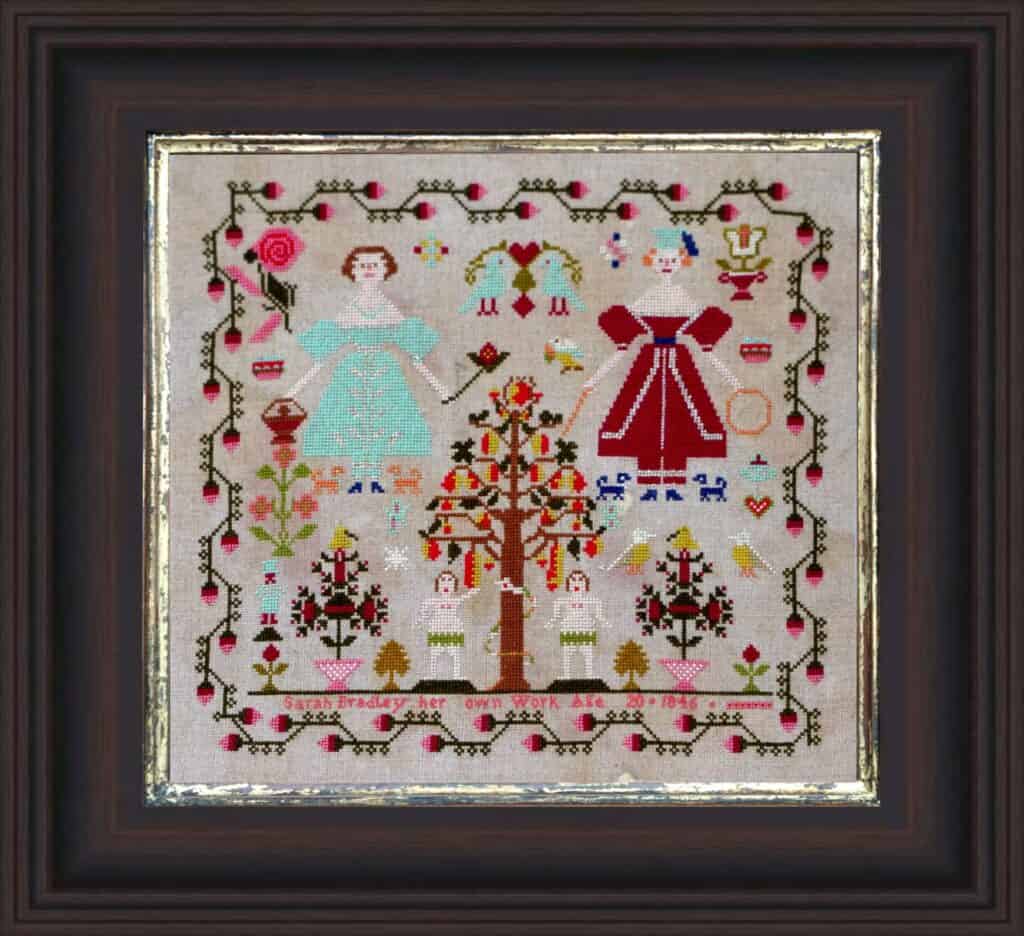

I do wish that our “ladies” would have had the foresight to inscribe a place name on their work! With Sarah and Bradley being very common in the UK, it has been impossible to identify our stitcher.
So, I look for other clues which might make that possible. First of all, I start with the location of where the sampler was purchased. In this instance, it was an auction house in Shropshire. Shropshire is a county to the west of England, bordering Wales. Sarah was 20 when she dated her work in 1846. I was hopeful that both of these facts would help in my search. Sadly, that was not to be the case.
Sarah was not an accomplished stitcher, and this made me wonder why she completed her sampler at a relatively old age. Could it be that this was the time of her marriage? Maybe her sampler was her “last hurrah” as a single girl or her “first hello” as a married lady. Neither of these assumptions made her identification possible.
Sarah stitched her sampler on a cloth that is known as Penelope Canvas or Double Canvas because it is made of double threads intersect in both the warp and weft.
The weft and warp can be easily split apart, thereby making it possible to stitch in “Gros point” or in “Petit point”. Gros point is using the large holes to create big stitches (what we would call “over 2” if stitching on linen), and the petit point is splitting the canvas and stitching every hole to create small stitches (or “over 1” if stitching on linen).
This canvas became very popular in the mid C19th, for needlepoint, tapestry and Berlin work. Wool became the preferred thread. Stitchers could use several strands at one time, creating different effects and shading by using a mixture of colours. These colours had become brighter, due to new dying processes and unlike silk were more colourfast.
The whole canvas could be covered in stitches resulting in a thick cloth suitable for upholstery as well as pictures and samplers. The most common stitches used being cross-stitch or tent stitch.
Sarah stitched her sampler in wool using both “Gros point” and “Petit point”, and leaving large areas of canvas unstitched.
The reproduction of Sarah Bradley 1846, is accurate in the pattern, however, I have made changes to her colour choices. Whether by taste or by just using what was available, Sarah’s greens were very muddy. I have added two additional greens; (2144/500) and (525/830). I’ve also made the apples in the tree red (935/666).
If you wish to stitch as Sarah did, then replace all of these with (2225/731).
One final change was the decoration of the girls’ dresses. Sarah stitched this in cream silk which against the wool gives a metallic look. To keep that same look I replaced the cream silk (3811/712) with Krienick Gold Metallic Thread No 4 (chart symbol X).
Of course, you can go “rebel” and use your colours. It may be at the moment with the extraordinary time that we are living through supplies may not be so readily available. Dig deep into your stash and pull out that piece of linen that maybe you were not quite sure about. Toss your threads into the air and see what lands! Whatever you do, I hope you enjoy stitching Sarah, and I look forward to seeing your results.
I am away until 1 July. Any orders placed will be sent after this date. If you are going to be at Bristol 5 at The Attic, I look forward to seeing you there. Michele Dismiss